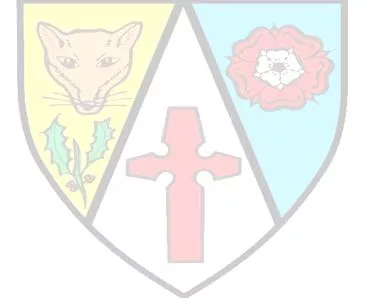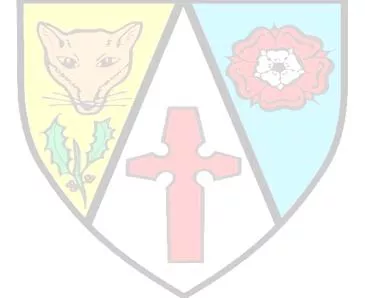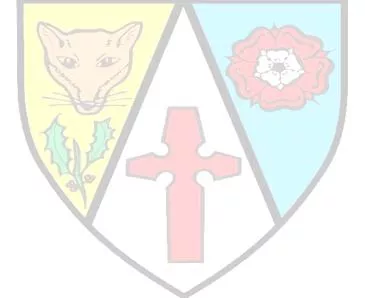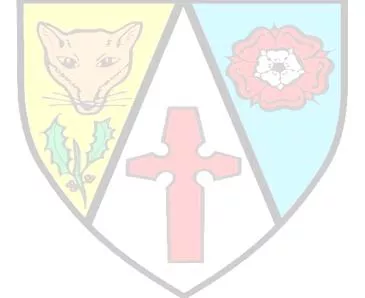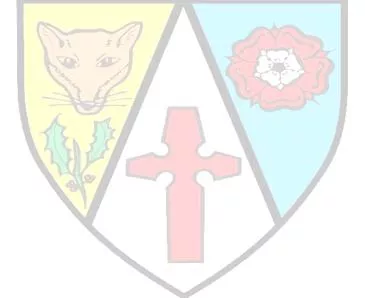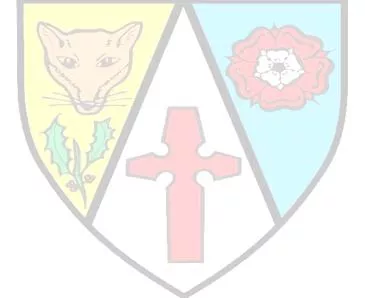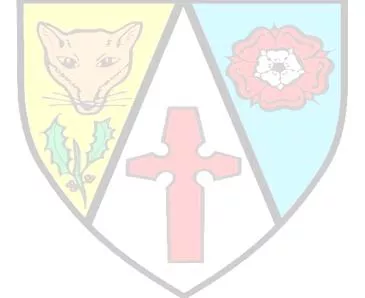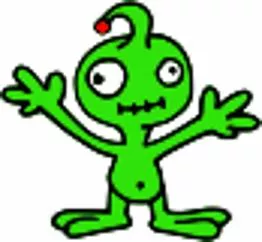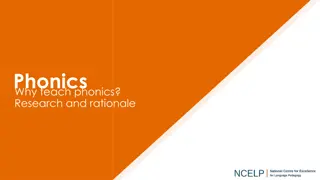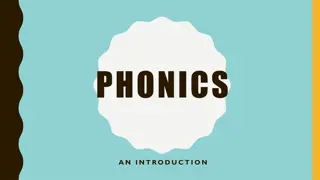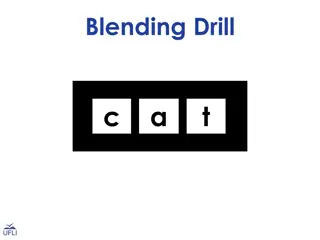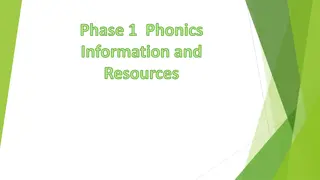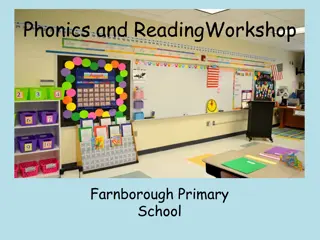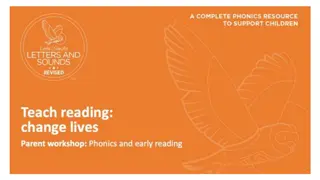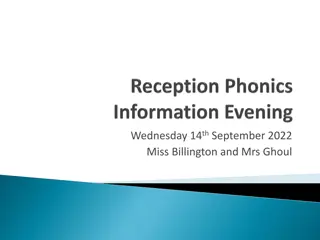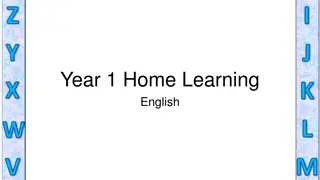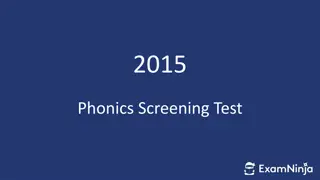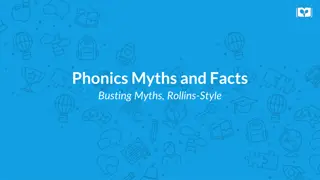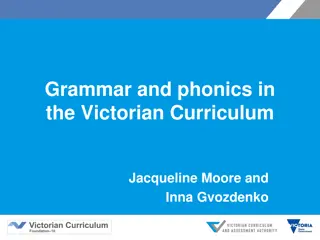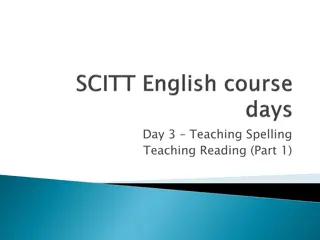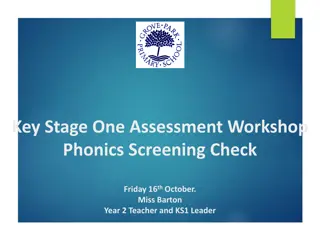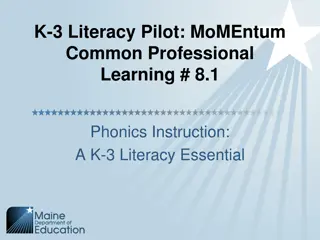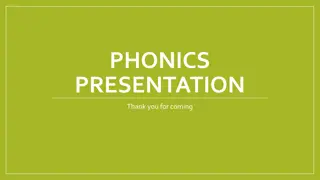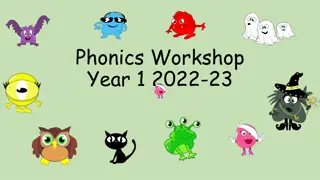Effective Phonics Teaching Strategies for Year One Students
Exploring the fundamentals of phonics in Year One, this resource delves into phonics screening checks, blending techniques, terminology, common phonic sounds, the importance of pure sounds, and practical tips on implementing phonics teaching in the classroom. Discover differentiated group sessions, spellings, and tricky word introductions to enhance students' phonetic skills effectively.
Download Presentation

Please find below an Image/Link to download the presentation.
The content on the website is provided AS IS for your information and personal use only. It may not be sold, licensed, or shared on other websites without obtaining consent from the author. Download presentation by click this link. If you encounter any issues during the download, it is possible that the publisher has removed the file from their server.
E N D
Presentation Transcript
Year One Phonics Evening.
Phonics Screening Check June 2020 Assess standard of phonics decoding 40 words Two sections Real words and pseudo (alien) words
Reading (blending) sand shop
Pseudo (alien) words bain meep
Terminology Phoneme- this is the sound e.g. c, m, ch, ou. There are 44 in our English language. Grapheme- this is a way of writing down a sound. This may consist of one or more letters e.g. ie as in pie, igh as in high. Segment- this is when children pull words apart by saying the sounds e.g. c-a-t m-oo-n f-ar-m-er
Terminology Continued Blend- this is when sounds are put together to make a word Digraph- a grapheme containing two letters that make one sound e.g. sh, th or vowel digraphs such as oa, ee Trigraph- a grapheme containing three letters that make one sound e.g. igh, ear and air Split digraph- when a vowel digraph is split by a consonant e.g. a_e lake or i_e bike
Phonic sounds s a t p i n m d g o c k ck e u r h b f ff l ll s ss j v w x y z zz qu ch sh th ng ai ee igh oa oo ar or ur ow oi ear air ure er
Pure sounds It is vital that sounds are pronounced in a pure way. For example f not fuh and s not suh . The reason for this is so that children can segment and blend correctly and do not add extra sounds when reading. e.g. b-a-t-u instead of b-a-t
Phonics video https://www.youtube.com/watch?v=BqhXUW_v-1s
How phonics works in Year One 5 differentiated groups 25 minute sessions with opportunities to read and write Spellings are carried out in phonics groups A new tricky word is introduced and explored daily
Letters and sounds Phase 1 Exploring sounds Phase 2 Introduction of phonemes and graphemes to pronounce and write correctly Children start to segment and blend CVC words (consonant-vowel-consonant) e.g. b-i-g
Letters and sounds continued Phase 3 Continuation of single sounds and introduction of digraphs and trigraphs. Children know one way of writing down all 44 phonemes. Children know the names of letters. Phase 4 Revision of phase 3 and consolidation through reading and writing words that contain taught phonemes including 2 syllable words such as lunchbox and sandpit .
Letters and sounds continued Phase 5 Split digraphs e.g. a_e e_e i_e o_e u_e New graphemes ay, ou, ie, ea, oy, ir, ue, ue, aw, wh, ph, ew, ew, oe, au, ey Alternative pronunciations in reading and writing e.g. ch grapheme in check, chef and school Phase 6 Revision of phase 5 and consolidation through reading and writing words to create fluency in reading. Explore spelling rules e.g. ing and ed .
Carrying out the check. No time limit Child with a familiar adult 1:1 Quiet place Children can sound out before blending Self correction allowed Adult will encourage but not indicate if right or wrong The threshold mark is unknown and will become available to teachers after the check.
Screening check video. https://www.youtube.com/watch?v=IPJ_ZEBh1Bk
June 2019 results Pass mark was 32/40 Our school- 90% Birmingham- 81% Nationally- 82%
Reporting Parents to be told their child s score on the end of year 1 report. Teachers to report scores to DfE Assessment Unit by July. Children who have not reached the expected standard will retake in June of Year 2.
Information pack An example of a past phonics check Useful websites to use at home Sound mats for Phases 2-5 to support your child at home Phase 2-5 Tricky Word lists



